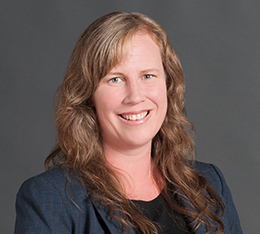Throughout California’s economic recovery, state leaders have prioritized recognizing the state’s diverging economic realities—apparent even before the pandemic—and envisioning responses that create more equity going forward. One strategy to speed up recovery is the Community Economic Resilience Fund (CERF), a $600-million program California created to distribute a portion of the federal recovery resources across the state. The 13 CERF regions are now tasked with developing plans to support recovery, diversify local economies, and develop sustainable industries. This post takes a look at the various economic challenges these regions face—and that CERF funds might target.
The ambitious goals for CERF are to target investments to the communities, businesses, and sectors most affected by the pandemic while creating stronger opportunities that also support the state’s climate change goals. Achieving these goals will be difficult since the state’s regions vary substantially in terms of needs and opportunities. In addition, the counties within them vary as well, complicating a fast-moving planning process. CERF planning also needs to align with other federal and state investments, like those on infrastructure and carbon neutrality.
Across the state’s 13 CERF regions, non-farm job losses today are highest in the Redwood Coast and Los Angeles (down 6.1% and 6.0%, respectively, compared to November 2019). The Bay Area, Central Coast, and Southern Border regions are also doing a bit worse than the state overall (down 4.1%) in terms of employment recovery. Job losses are lowest in the Inland Empire and Northern San Joaquin Valley (down 1.9% and 2.0%, respectively).
Typically, hard-hit service sectors, including leisure and hospitality, drive the employment shortfall across regions. Employment in these sectors is down the most—23%—in the Bay Area, where like in much of coastal California, enervated urban centers and tourism continue to drag demand for service-based businesses. However, in other regions, like Kern, these service sector jobs are only down 4%, while government jobs are 7.7% below pre-pandemic levels, reflecting the decline in services provided by local government during the pandemic. In the Inland Empire, hard-hit service sector jobs are down (12.8%), as are manufacturing jobs (6.9%), but jobs in trade and transportation, especially the booming logistics sector in the region, are nevertheless driving growth (up 7.7%)
These regional and sectoral patterns may reflect how workforce needs are shifting—temporarily or permanently—as a result of the pandemic. This means that returning to pre-COVID employment levels in each sector may not be an appropriate benchmark.
However, ensuring greater opportunities for workers in each region is a broad goal of CERF. In the years leading up to the pandemic, the state’s economy was hot, with record low unemployment and rising wages. Still, job opportunities varied widely and a sizeable share of working Californians lived in poverty or near poverty. Statewide, 10.6% of workers age 25 to 64 pre-pandemic lived in poverty, according to the California Poverty Measure (CPM). An additional 14.7% lived just barely above the poverty line, meaning one-quarter of California’s workforce was in or near poverty pre-COVID.
There were large regional differences in poverty across the 13 CERF regions: 19.5% of Bay Area workers were poor or near poor, compared to 31% of workers in Los Angeles County. When housing costs are factored in, a single adult worker with two kids in LA County needed an annual income of about $43,000 to avoid poverty or near poverty, compared to $34,000 for the same family in Kern County.
Poor or near-poor workers make up a disproportionate share of some sectors hard hit by the pandemic: 40% of workers in leisure and hospitality or other services were poor or near poor, even before the pandemic. Administrative services, agriculture, and construction also had high rates of working poverty.
The CERF regions also had widely differing outcomes demographically. Across all 13 CERF regions pre-pandemic, Latinos were more likely to be working while in or near poverty than would be expected based on their share of the workforce—from 22% more likely in Eastern Sierra to 85% more likely in the Bay Area. Conversely, white Californians were uniformly less likely to find themselves among the working poor throughout the state, though there was still regional variation. Asian workers were also less likely to be in or near poverty in all but the North State region. For African Americans, Native Americans, and other racial/ethnic groups, there were more differences across regions.
Better quality work in the future could require fundamental shifts in the types of jobs supported by each region’s economy—and “recovery” might look different for workers in different sectors and regions. Yet if the recovery is to herald a better economic future for more Californians, policymakers will need to address longstanding challenges—like access to higher education and high-quality jobs—coordinate across major investments, identify statewide goals where possible and target those with the greatest need. By doing so, CERF could maximize the chances of promoting the well-being of Californians who need it the most and fostering a brighter and more equitable future for all the state’s residents and regions.






